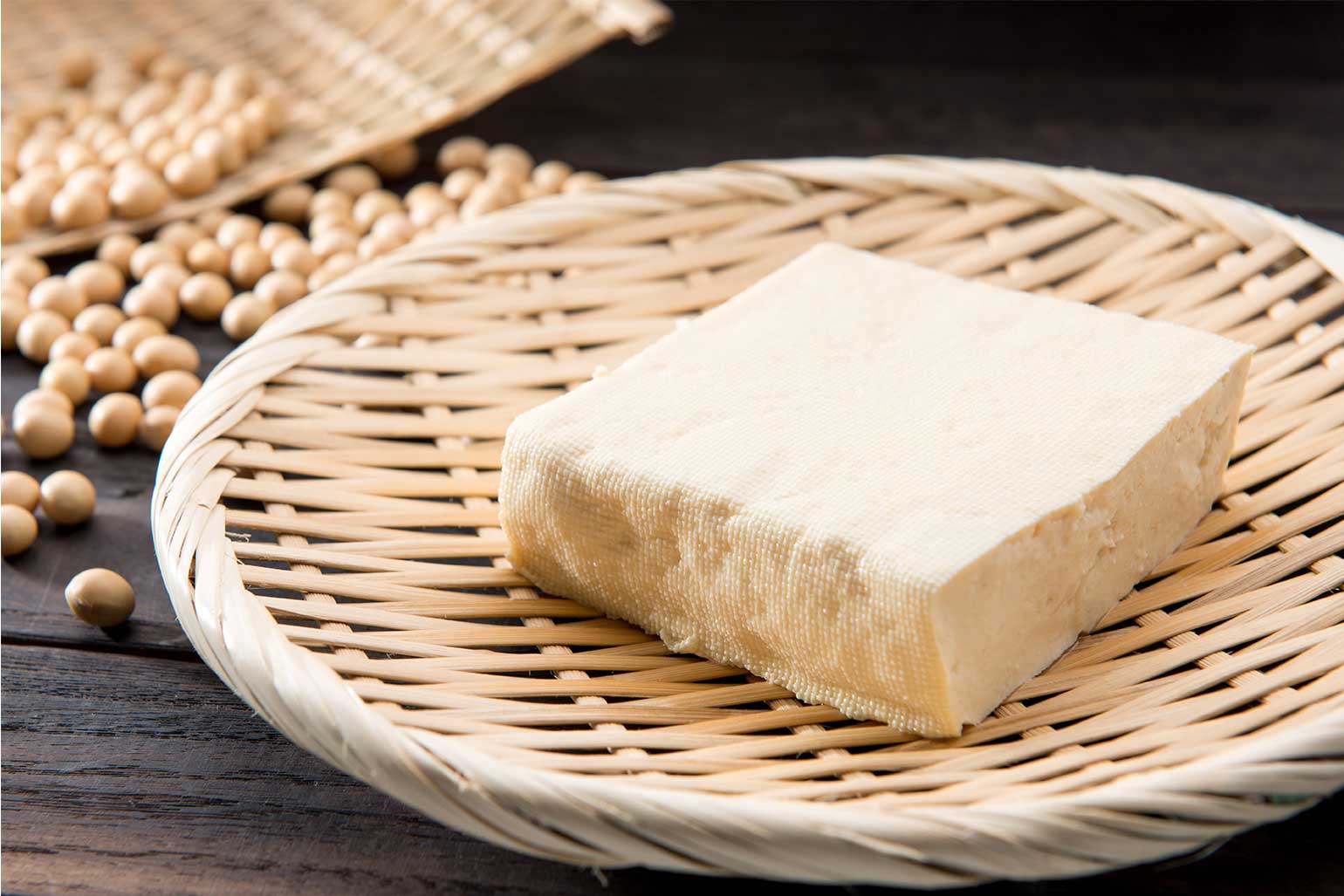“Tofu” is an ingredient that is known as an everyday food in many countries in East Asia, such as China, Korea, and other Southeast Asian countries, including Vietnam, Cambodia, Thailand, Malaysia, Indonesia, and Myanmar. Of course, in Japan as well, “Tofu” is one of the most popular and indispensable ingredients in Japanese cuisine. “Tofu” is made by extracting soy milk and then solidifying it with a coagulant. Although the basic processes of production are almost the same, the “Tofu” in each country and region is actually quite different. Each culture has its own preferences and major cooking methods, and each countries’ or regiones’ “Tofu” is made according to these differences. “Tofu” in Japan is the same as those in other countries, and has been adapted to the Japanese food culture. However, today’s Japanese food culture is quite varied and incorporates the food culture of various countries and regions around the world. Therefore, there are many different types of “Tofu”. Recently, it seems to have become widely known in Western countries and other countries as a healthy food rich in nutrients and low in calories. So, in this article, we would like to tell you about “Tofu” in Japan.
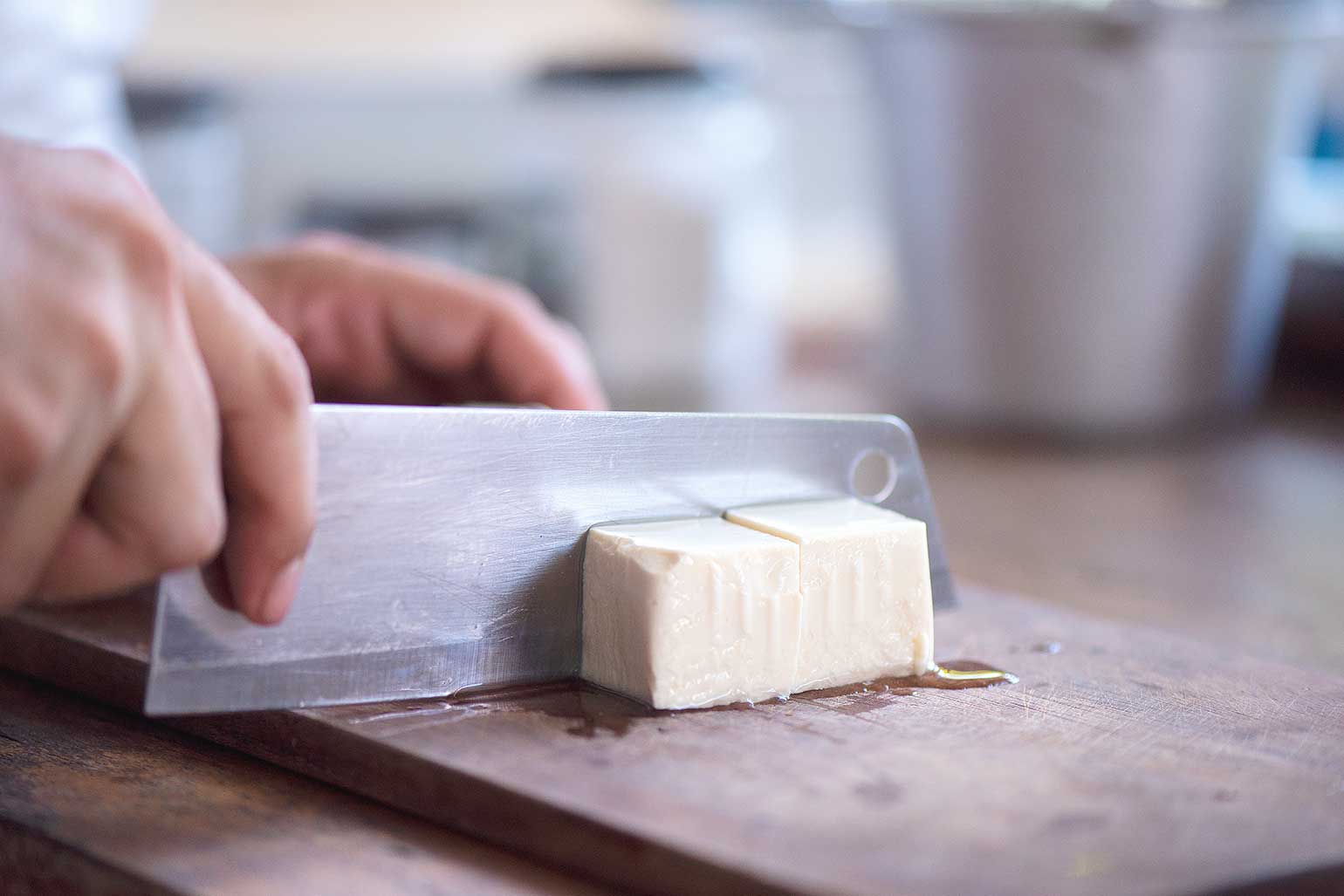
It is said that the method of making “Tofu” was first introduced to Japan during the Kamakura period (late 12th to 13th century). There are many theories, but it is said to have been introduced along with Zen Buddhism. In “Shojin cuisine”, which was studied and developed by Zen monks, soybeans were a very important ingredient in the cooking process. “Tofu” was one of those cooking methods that used soybeans. Around the 15th century, it was widely known to the public, and its basic production methods were spread throughout the country. The production of “Tofu” is a very delicate process that is affected by the quality and distribution of water and other ingredients, as well as temperature, humidity, and other climatic factors. However, aside from the quality of the finished product, the basic production process is very simple. Also, the ingredients were only soybeans, water, and coagulant (at that time, “Nigari” was used), so it was not very expensive. For these reasons, “Tofu” seems to have quickly become one of the everyday foods in Japanese food culture. During the Edo period (1603-1868), it had completely become a part of the diet of the common people, and the shogunate imposed fairly strict price controls. Incidentally, in the middle of the Edo period, the book on tofu cuisine called “Tofu Hyakuchin” was published. That book had 100 tofu dishes in it. The book was so well received that a sequel to it was published…「( ̄▽ ̄;) Well, that’s how important “Tofu” has become in Japanese cuisine, isn’t it? In the modern era, some of the production processes had been mechanized, making them more efficient and less expensive. Today, “Tofu” production in Japan is mass-produced in factories by major companies, but it is also produced by many medium and small companies and individual stores in each region. “Tofu” is a perishable food that is difficult to store for a long time, and fresh handmade products are popular. Probably, it means that maintaining such product value is still successful today. It is also interesting to note that there are popular and famous stores in each area.

As you can imagine, there are so many dishes that use “Tofu”. It’s an ingredient that is suitable for almost any kind of cooking method, Japanese stewed, grilled, soup, steamed… However, we would like you to try first as “Hiyayakko” so that you can enjoy the flavor and texture of tofu itself. Of course, the first bite is just as it is, without any seasonings or condiments. From the second bite, enjoy adding your favorite seasonings and condiments to your heart’s content. We hope you like it.
“Tofu” in Japan is generally classified into the following four types.
・Momen-Tofu(Regular Tofu)
“Momen” means cotton cloth. Momen-Tofu is made by adding a coagulant to soy milk, letting it coagulate, then pouring it into a mold lined with cotton cloth and pressing/shaping it. The name Momen-Tofu comes from the fact that the surface of it is covered with the pattern of the cotton cloth laid in the mold.
・Kinugoshi-Tofu
“Kinu” means silk cloth. In making Kinugoshi-Tofu, the soy milk used is relatively thicker than that used in making Momen-Tofu. It is made by adding a coagulant to soy milk and then pouring the coagulated mixture into a mold, forming it, and then exposing it to water. It is characterized by higher water retention and water-soluble vitamin retention than Momen-Tofu, as well as a smoother texture. Oh, please note that Momen-Tofu is not made by straining soy milk through cotton cloth, and Kinugoshi-Tofu is not made by straining soy milk through silk cloth.
・Soft-Tofu
As with Kinugoshi-Tofu, coagulation occurs when coagulant is added to thick soy milk. And, it is made by adding the pressing/shaping process that is done in the production of Momen-Tofu.
・Packaged-Tofu
After thick soy milk cooled, a coagulant is added to solidify it. And then, it is manufactured by filling it into a synthetic resin container, heating and molding the entire container, and then cooling it. It is characterized by its long-term shelf life, as it is sterilized by heating during the coagulation process. Packaged-Tofu is suitable for mass production in factories, etc., and has high mass transportability, so it is generally distributed in large quantities.
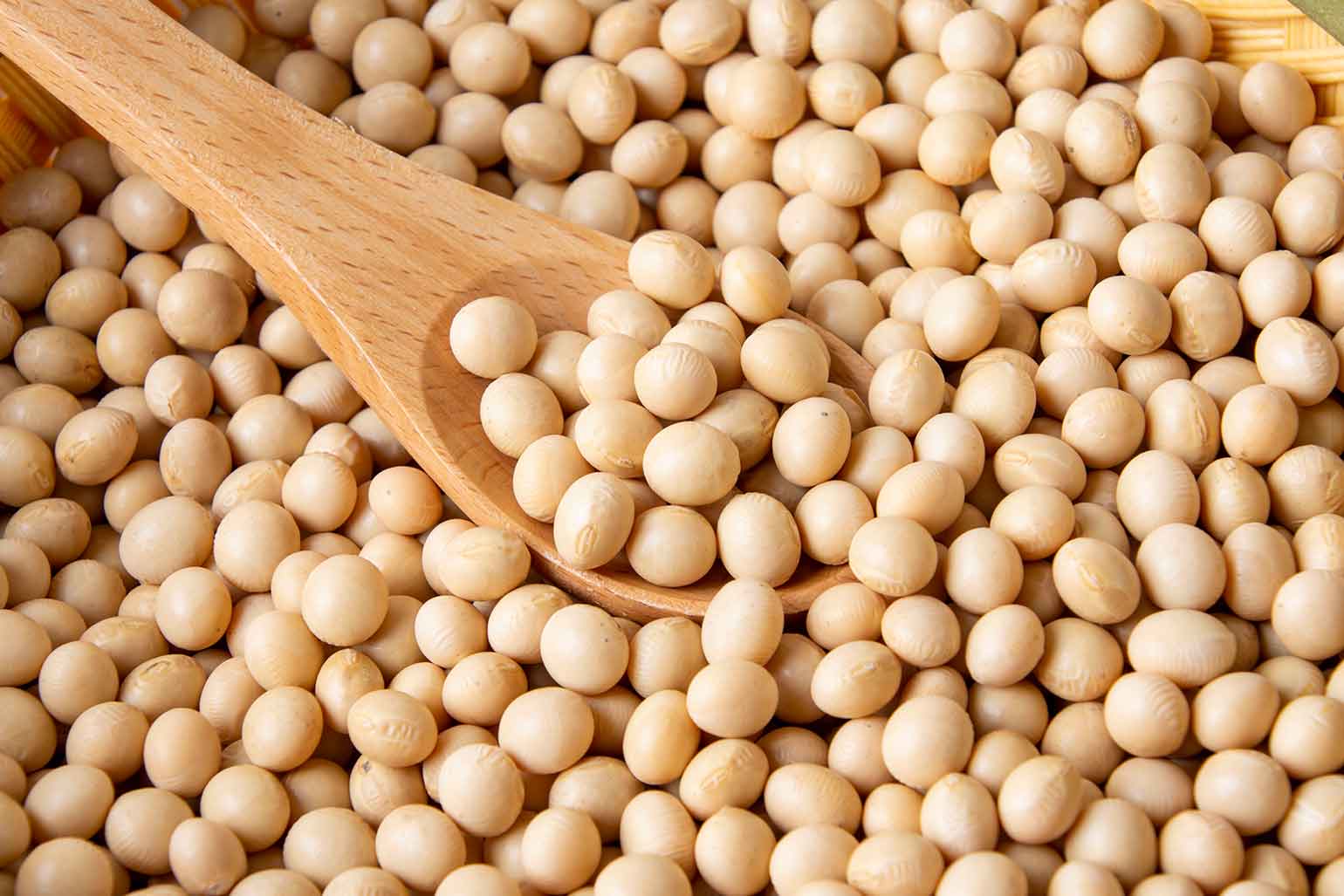
In addition to the four types mentioned above, even newer tofu products have been created in recent years. For example, tofu that is even more particular about its smooth texture and melt-in-your-mouth quality is now available. They are made with various innovations in the amount and type of coagulant, processing temperature during coagulation, and other ways. Some of them might be very comparable to the Taiwanese “Tāu-hue”. In addition, tofu made from beans other than soybeans, such as edamame and peanuts, are also available on the market. There are even izakaya (Japanese-style pubs) that serve tofu made from lentils, chickpeas, peas, etc. Therefore, we can see that tofu has become an ingredient that is attracting renewed attention.
About coagulants
The raw materials for “Tofu” are soybeans, water, and coagulant. The soy milk obtained by squeezing soybeans is solidified with coagulant… It’s a very simple production process. “Mm? What is this coagulant?” You’re probably wondering. Let us explain about it a little here. In the past, a coagulant called “Nigari (bittern)” was used for making “Tofu”. “Nigari” is a mineral by-product that is extracted from seawater during the production of salt. Its main ingredient is magnesium chloride. The magnesium ions in the magnesium chloride react chemically with the proteins in the soy milk to form a gel, which coagulates the soy milk to form “Tofu”. Before World War II, “Nigari” was mainly used because it was easy to obtain, but it became difficult to obtain due to material controls after the war. Therefore, calcium sulfate, the main ingredient of gypsum, was used instead. As a result, calcium sulfate was found to be more suitable as a coagulant for “Tofu”, and thereafter it was mainly used. In recent years, “Tofu” made with “Nigari” has been reevaluated for its unique flavor and taste, and is now being sold commercially. When comparing them, the flavors are different, it is true. We hope you all try it.
Processed foods made from “Tofu”
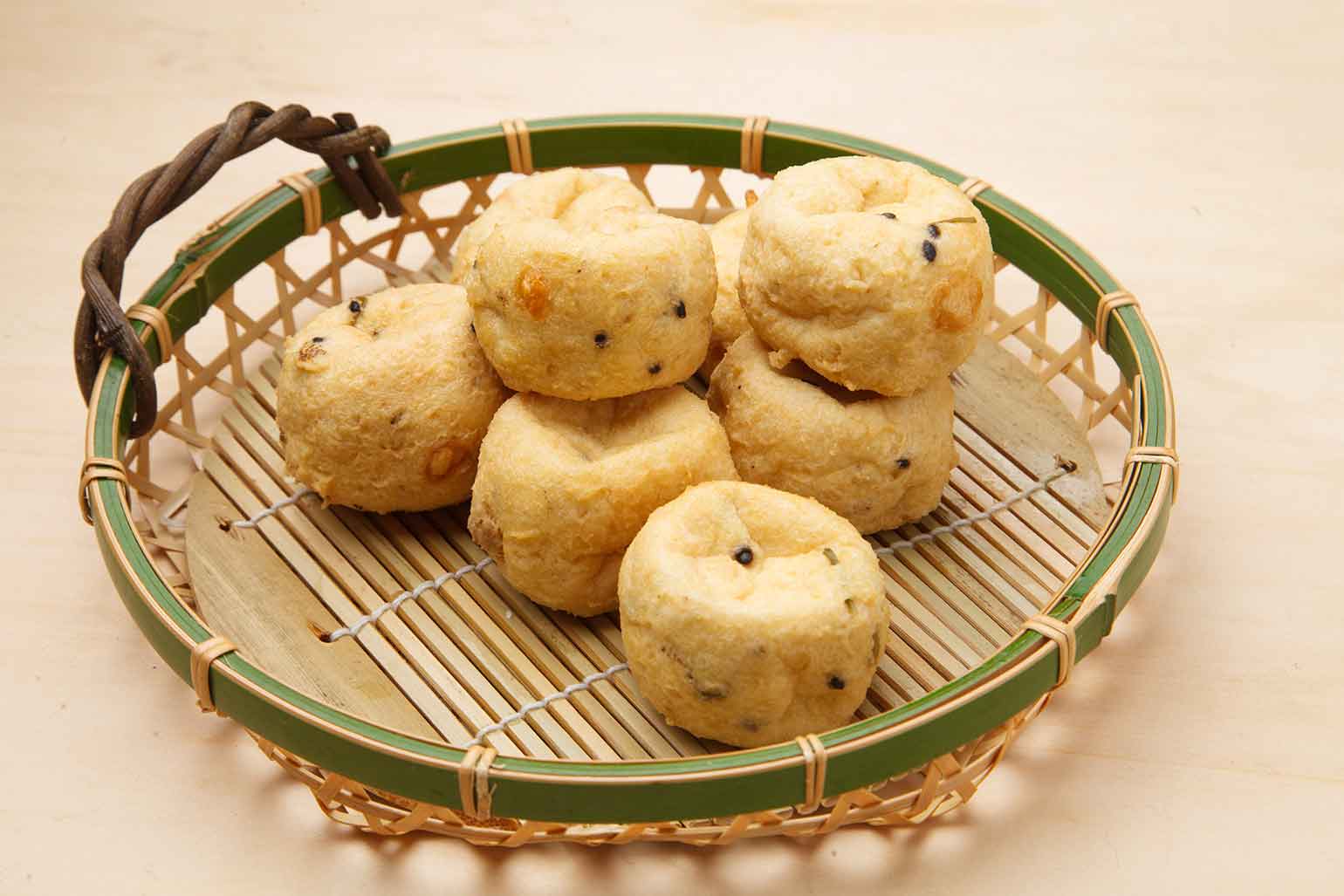
“Tofu” itself is a complete food (or dish), but “Tofu” is also a wonderful ingredient. There are many unique processed foods that use “Tofu”. They are based on a number of cooking methods developed in the study of Shojin cuisine. A lot of research was done to improve and diversify the texture and flavor. Some of these ideas were to make the most of the other ingredients, and some were to make the food more satisfying. “Tofu” was probably a very good ingredient to fulfill these needs. Here are a few of the most common ones.
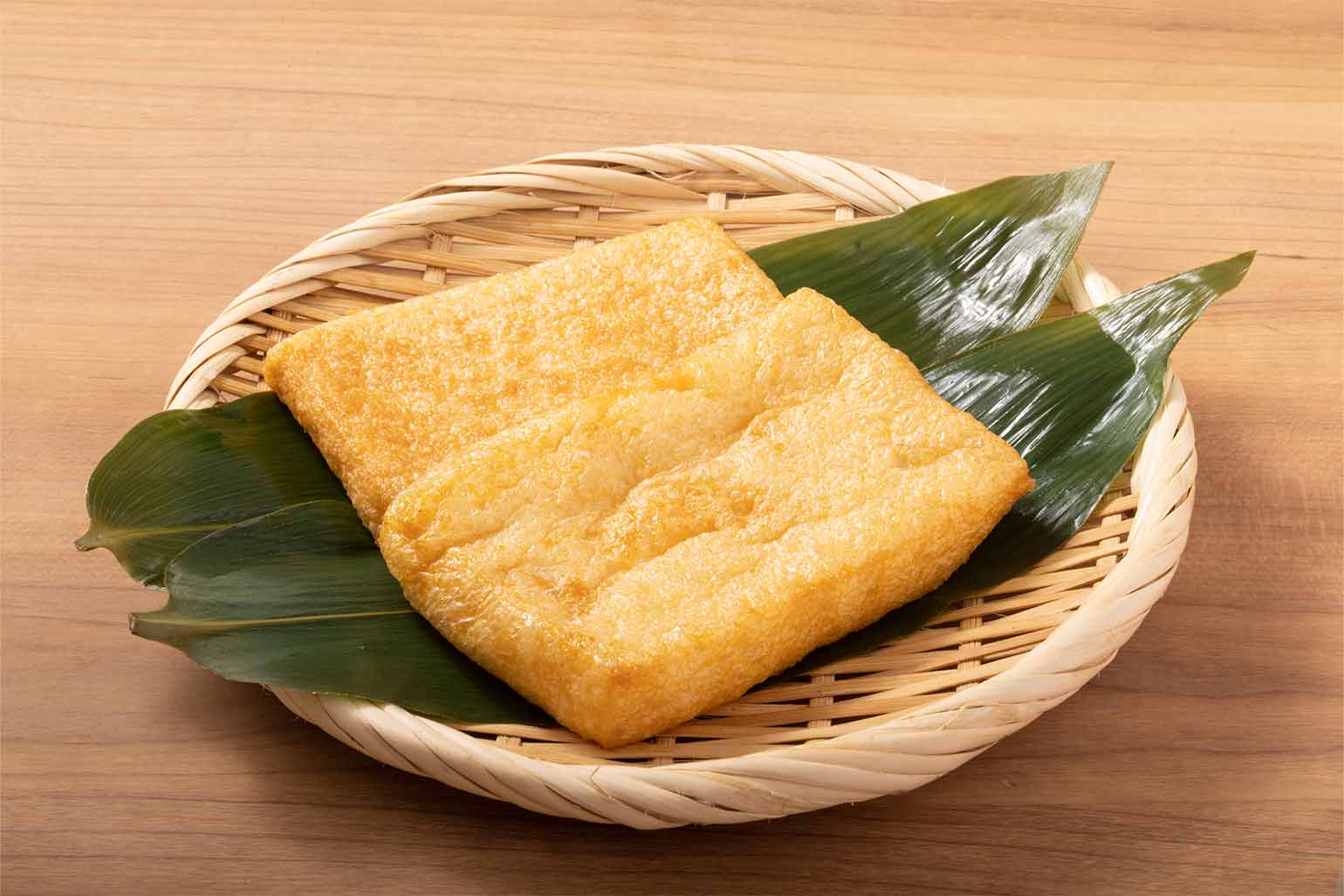
・Abura-Age (Fried Tofu)
It is tofu sliced into thin strips and deep-fried until well heated through to the center. This is what is used in kitsune-udon and inari-sushi. It is also popular as an ingredient in miso soup. It is one of the most popular processed foods made from tofu, suitable for a variety of dishes such as Japanese stewing, stir-frying, and baking.
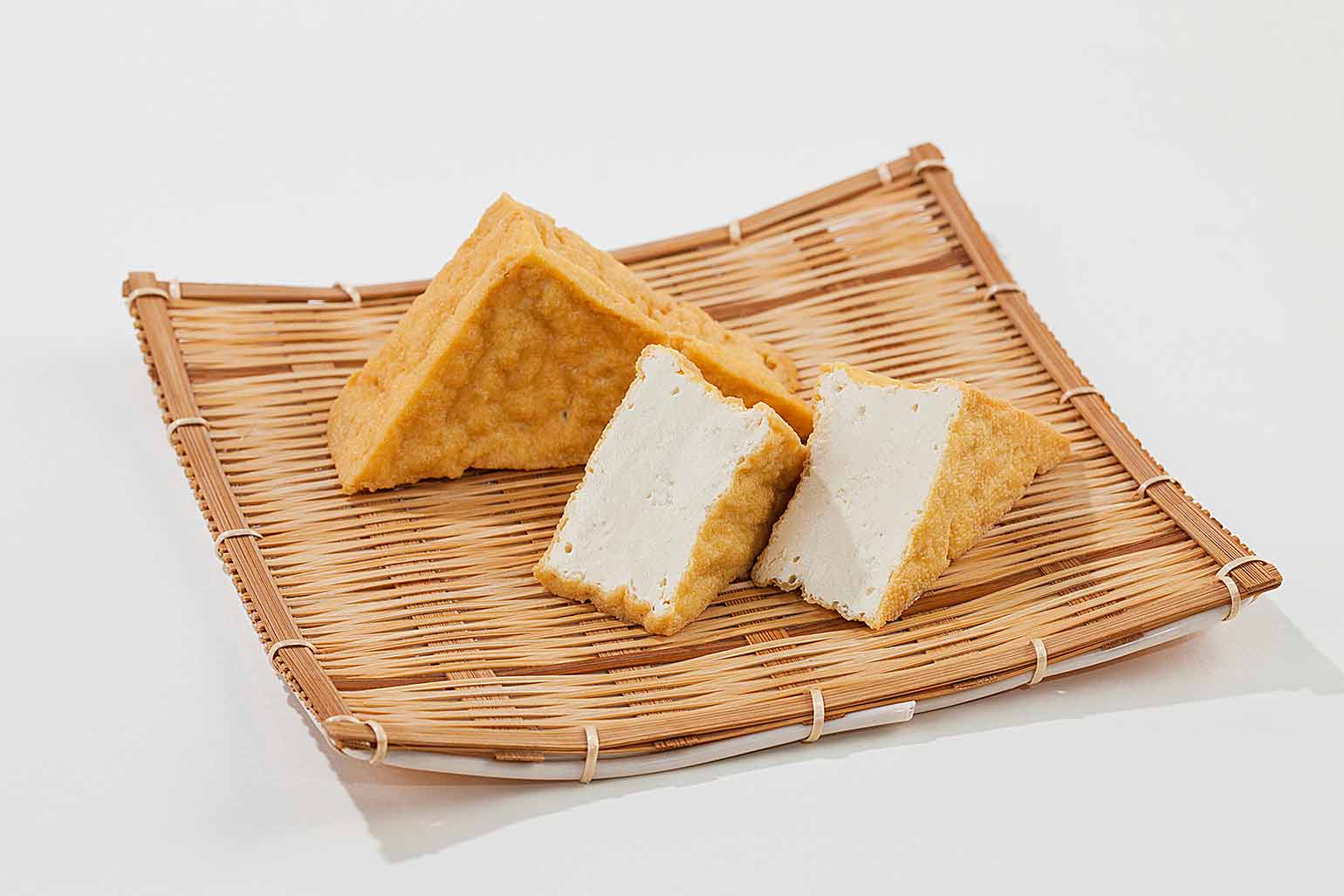
・Atsuage Tofu
Atsuage tofu is made by deep-frying the surface of thickly sliced tofu in oil. It is mainly used as a garnish for Japanese stews and soup dishes. It is also a popular ingredient in hot pot dishes.
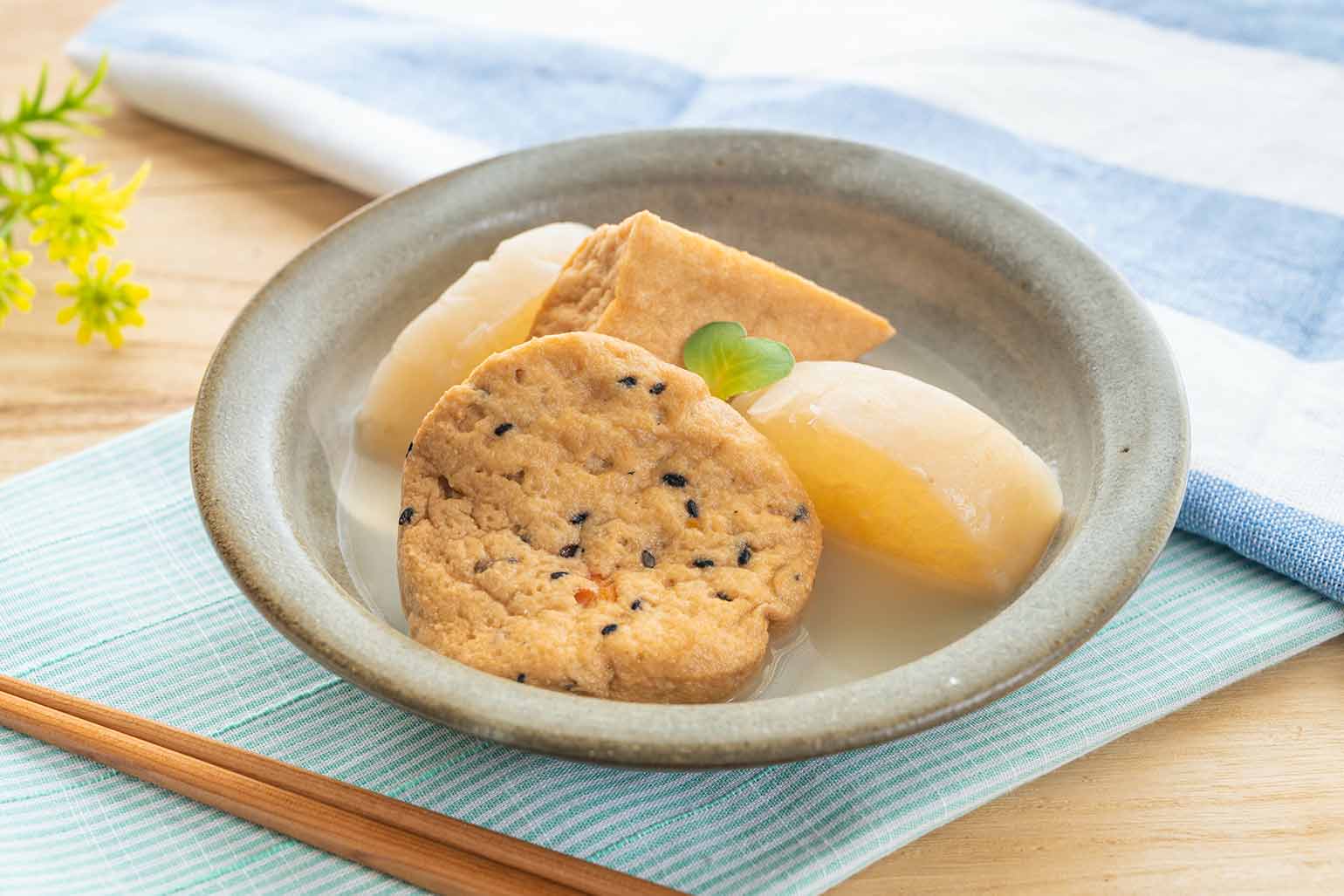
・Ganmodoki
It is made by mixing finely crumbled, well-drained tofu with finely chopped vegetables, and then deep-frying it in oil. It is well used as a garnish for Japanese stews and soup dishes. “Gan” means wild goose. The word “modoki” means “imitation” or “fake”. It is said that the name “Ganmodoki” comes from the fact that it was used to imitate (or substitute for) the meat of wild goose.
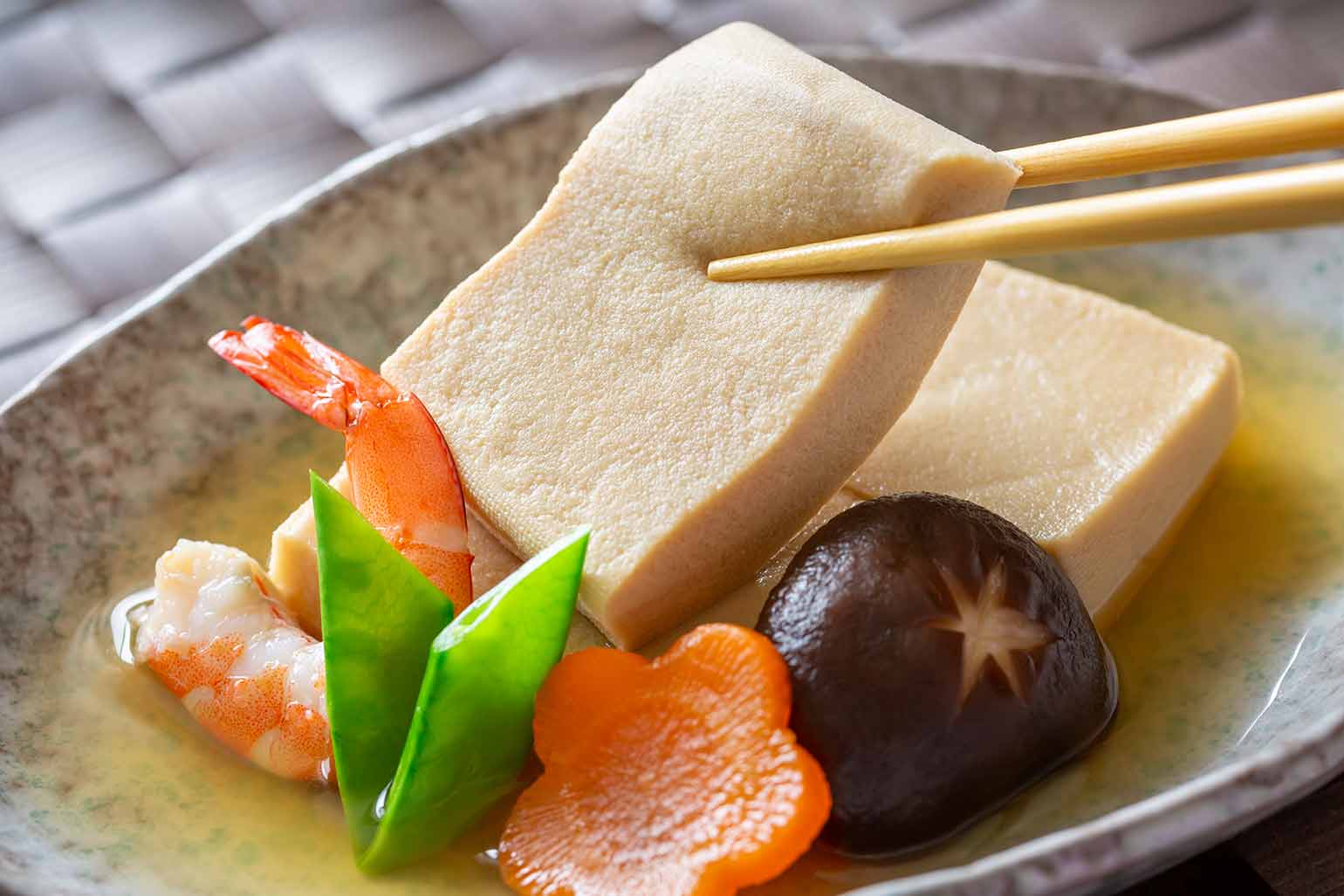
・Dried Tofu
As the name suggests, it is dried tofu with a high water content. There are various drying methods, such as salted, freeze-dried, and smoke-dried, and etc. “Koya-Tofu” is well known as one of the “Dried Tofu”.
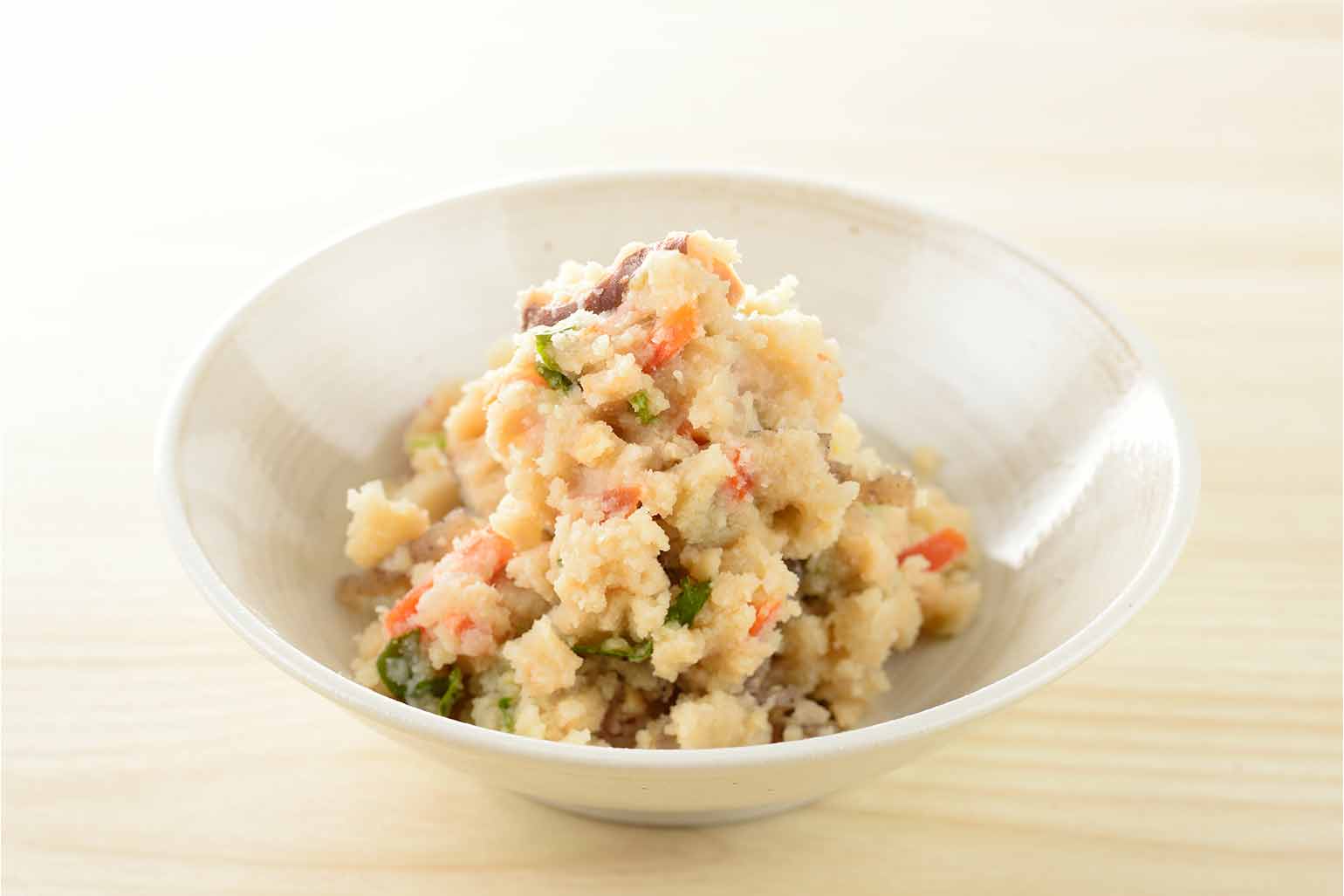
・Okara
“Okara” is not exactly a processed food made from tofu. However, it is an ingredient that is very closely related to tofu, so we would like to mention it here as well. “Okara” is the bean curd lees left over after the soybeans are strained to make tofu or soy milk. Because of its appearance, it is sometimes written in Kanji characters as “雪花菜 (it means “snow flower greens)”. It is also called “Unohana”. (The flowers of the hydrangea family called “Utsugi”.) Since the beginning of tofu production, “okara” has been used as an ingredient rather than being discarded. Even though it is a squeezed lees, it has a very high nutritional value. It is also low in calories and rich in dietary fiber, and in recent years, like tofu, it has been attracting attention as a healthy food. The ways to cook or use it are quite varied, so we will take another opportunity to cover the details.
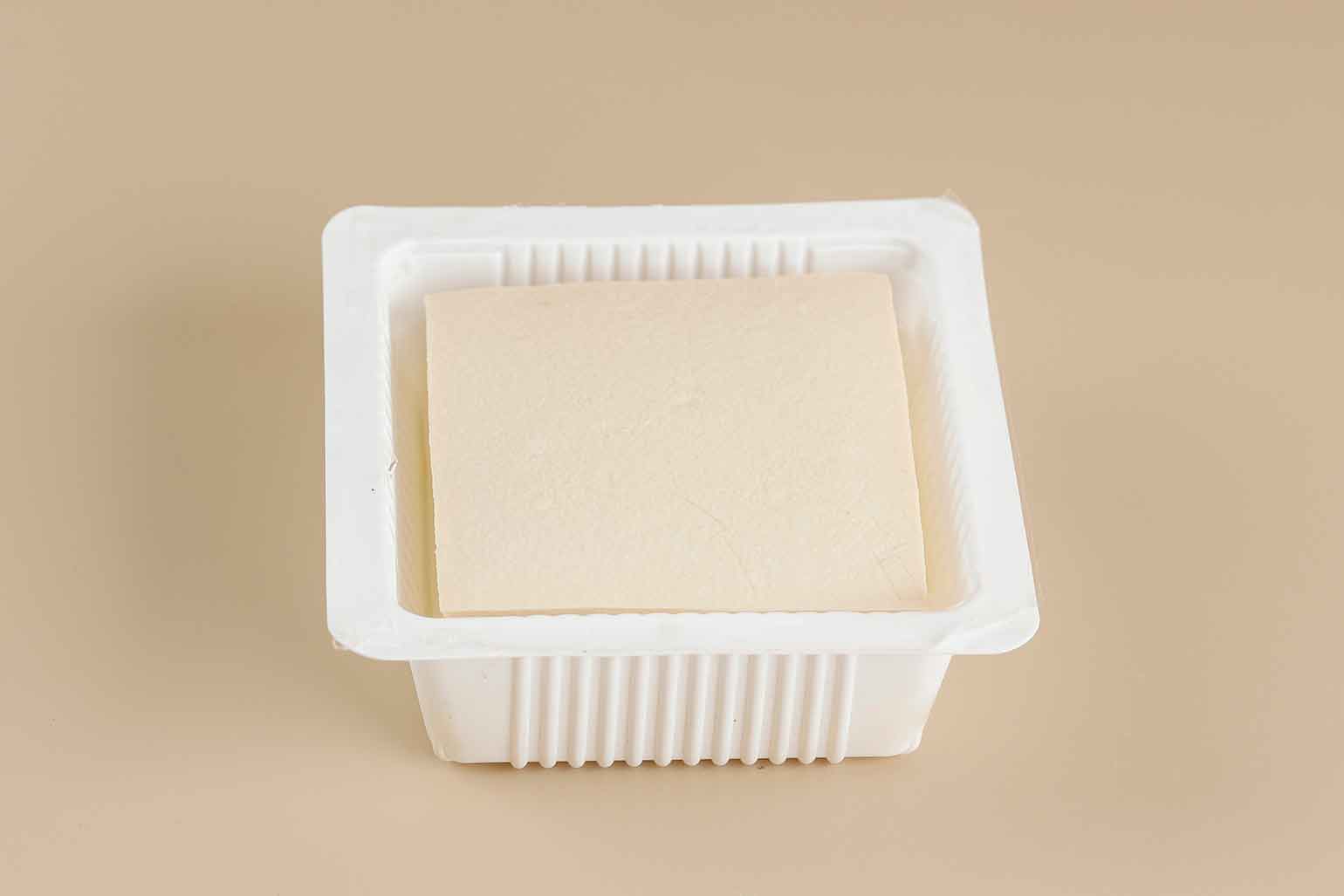
In fact, most of the soybeans used as raw materials for “Tofu” produced in Japan today are imported. Also, the soybeans they import are usually limited to non-GMO soybeans. In the past, there were many small and medium-sized companies and individual stores that produced “Tofu”, but now there are very few. This is partly because of the change in demand due to the diversification of Japanese dietary habits, but also because of the high price of imported soybeans as raw materials, and the soaring price of crude oil used in manufacturing, distribution, and sales. In recent years, it has become less and less common to feel the “handmade feel” that differs in flavor and texture from region to region and from store to store. While manufacturing, transportation, and long-term preservation technologies are developing, some things are inevitably going to be lost. In light of these, we feel that we live in a blessed time, but at the same time, feel very sorry. In the future, we hope that we will be able to utilize all of these advantages in a way that retains just enough of them. Umm… But it will be not that easy…



